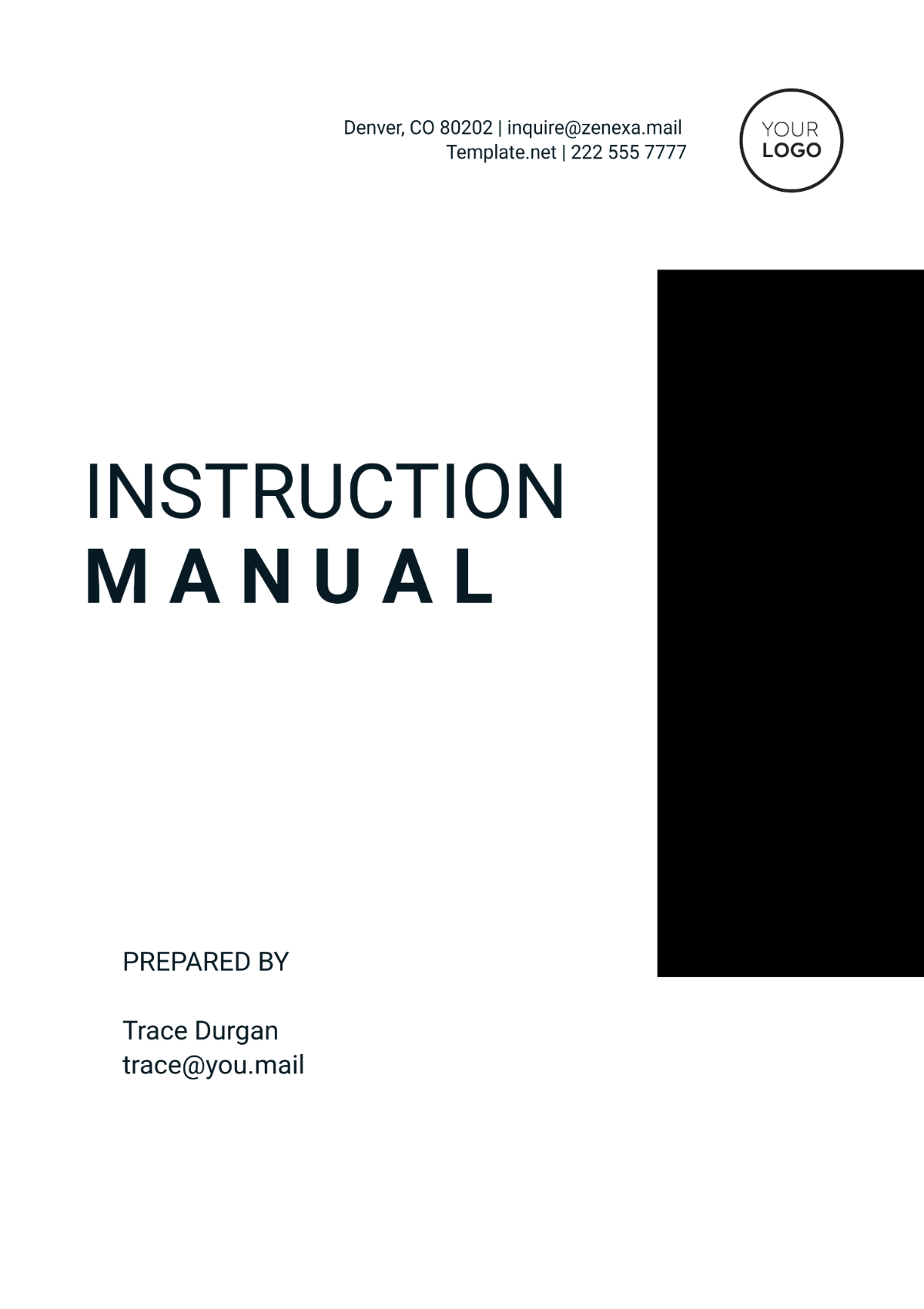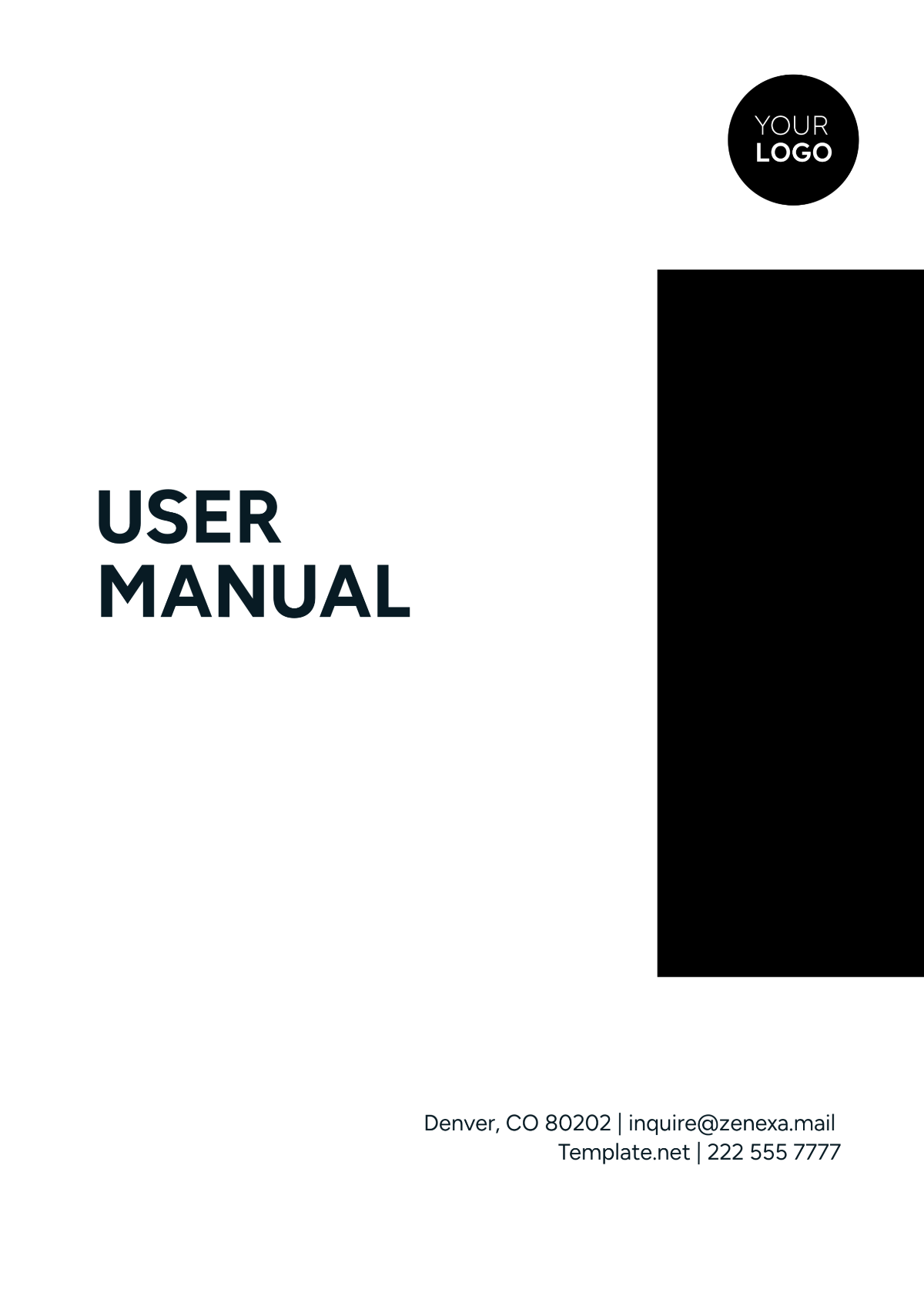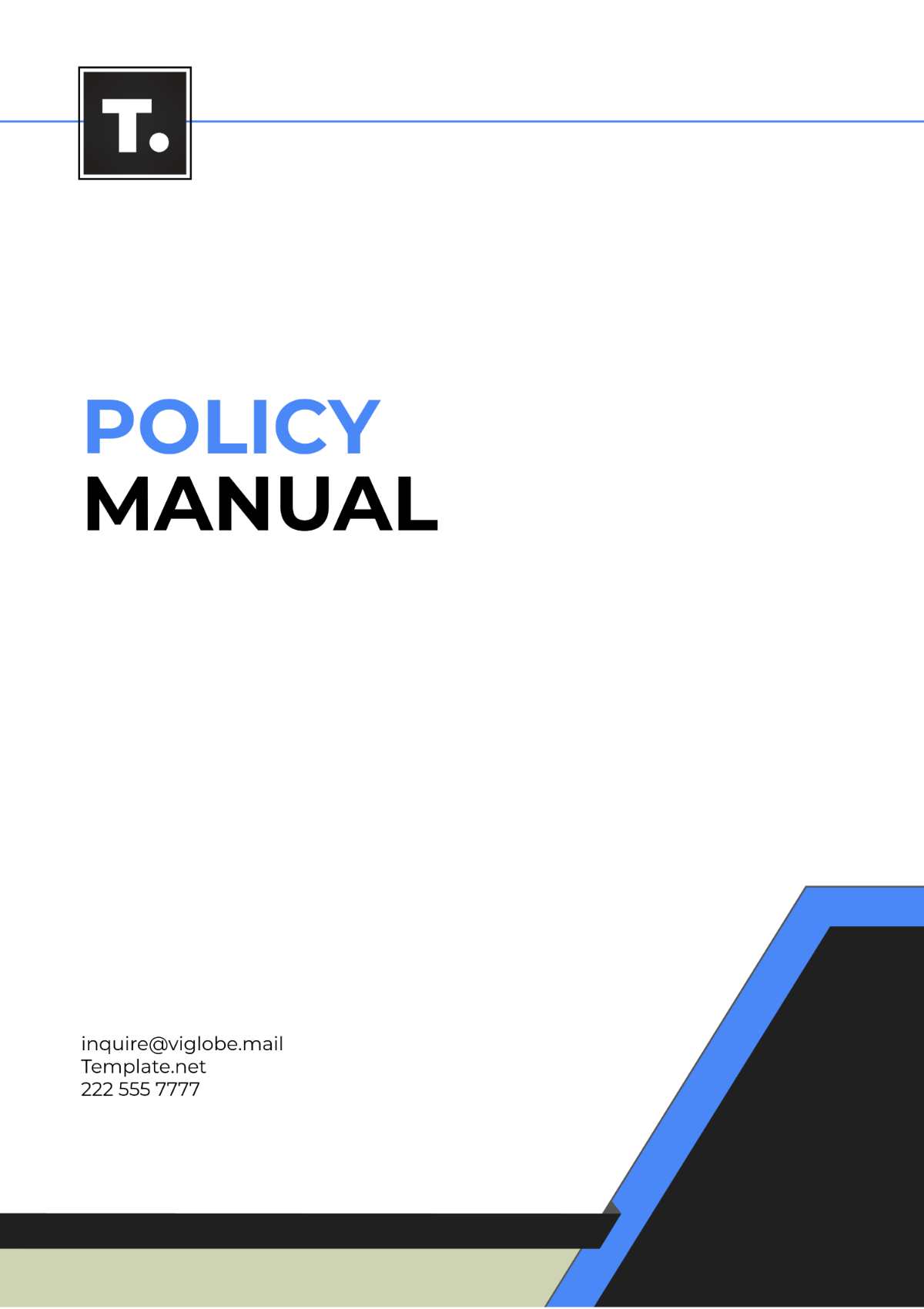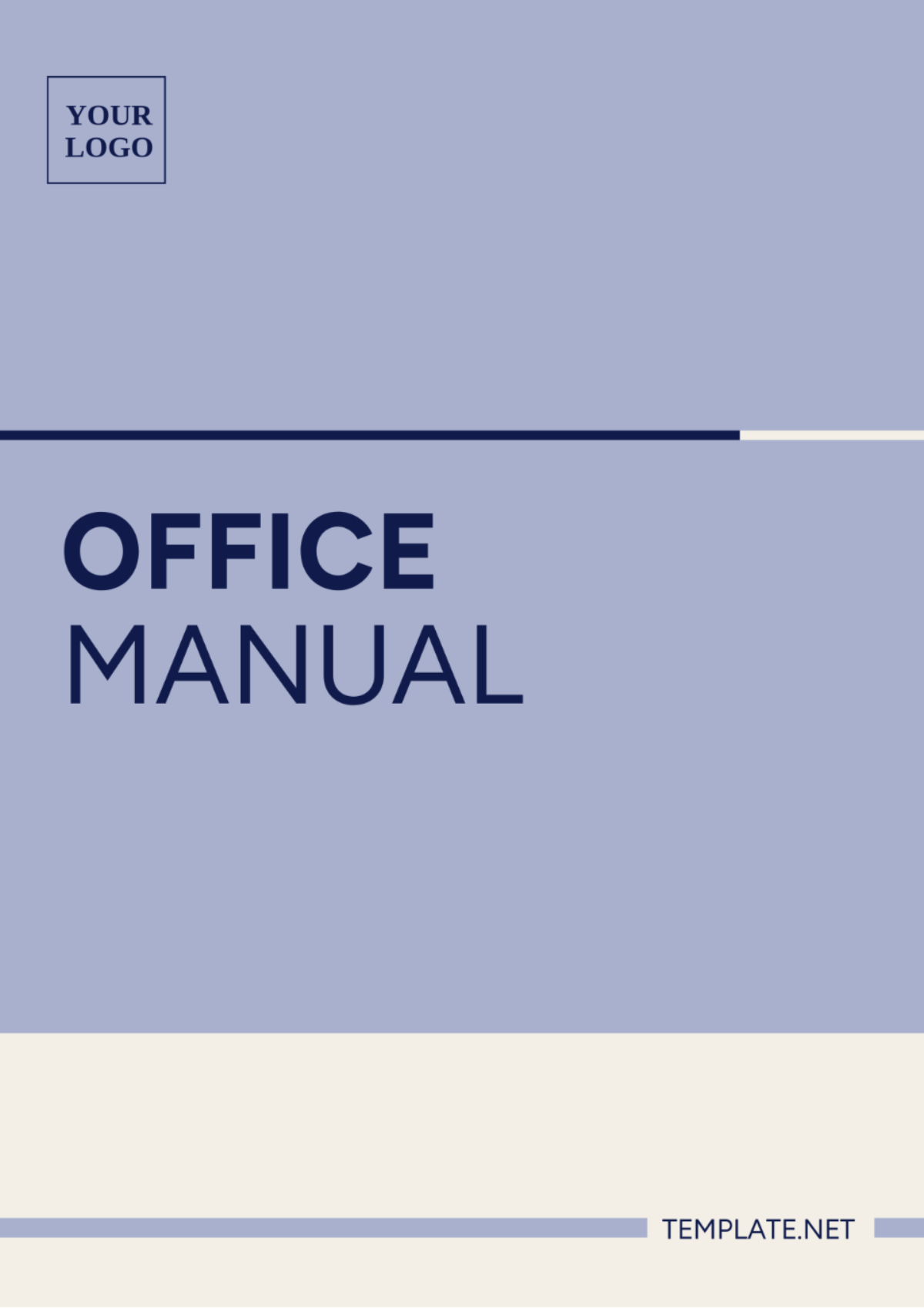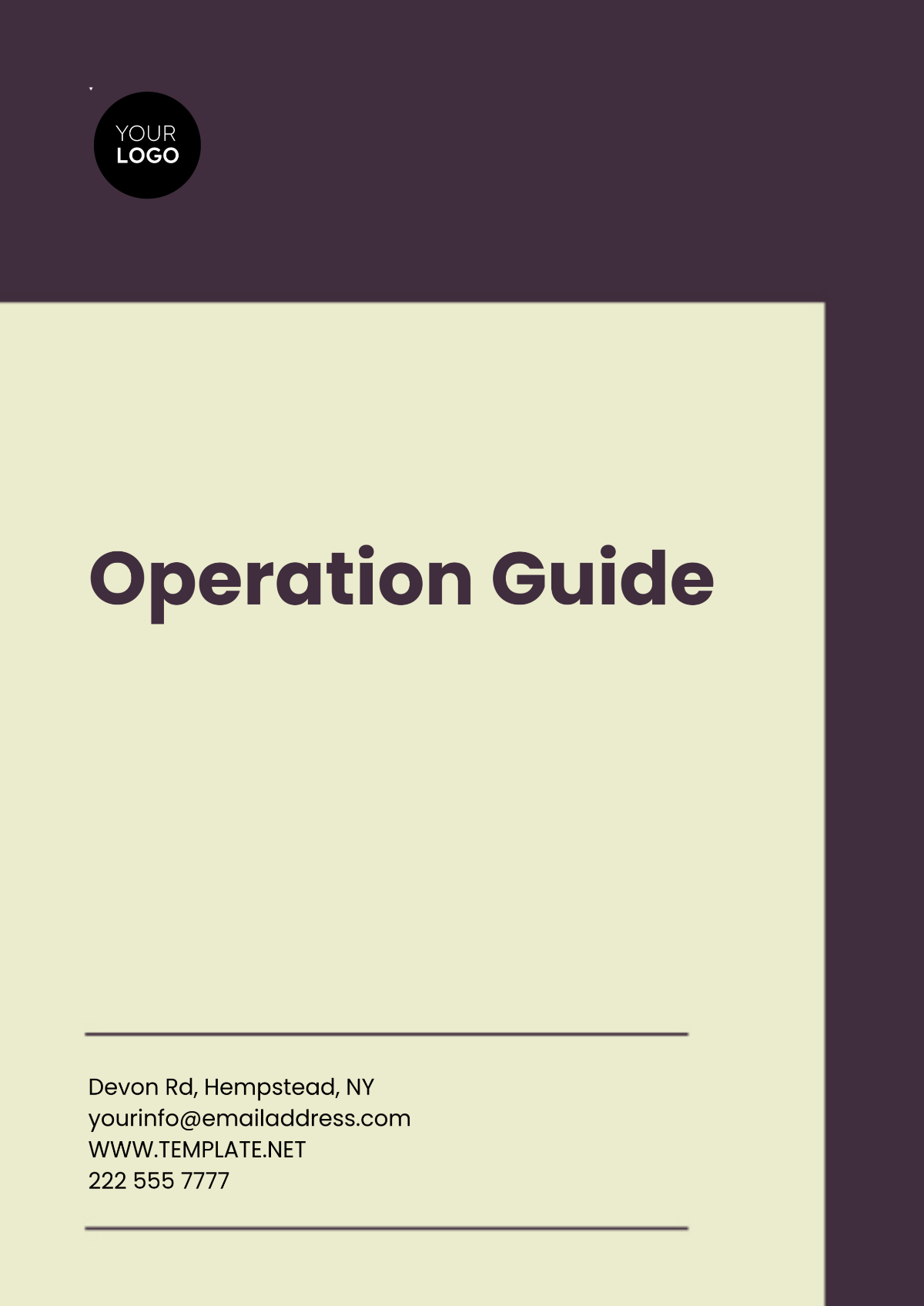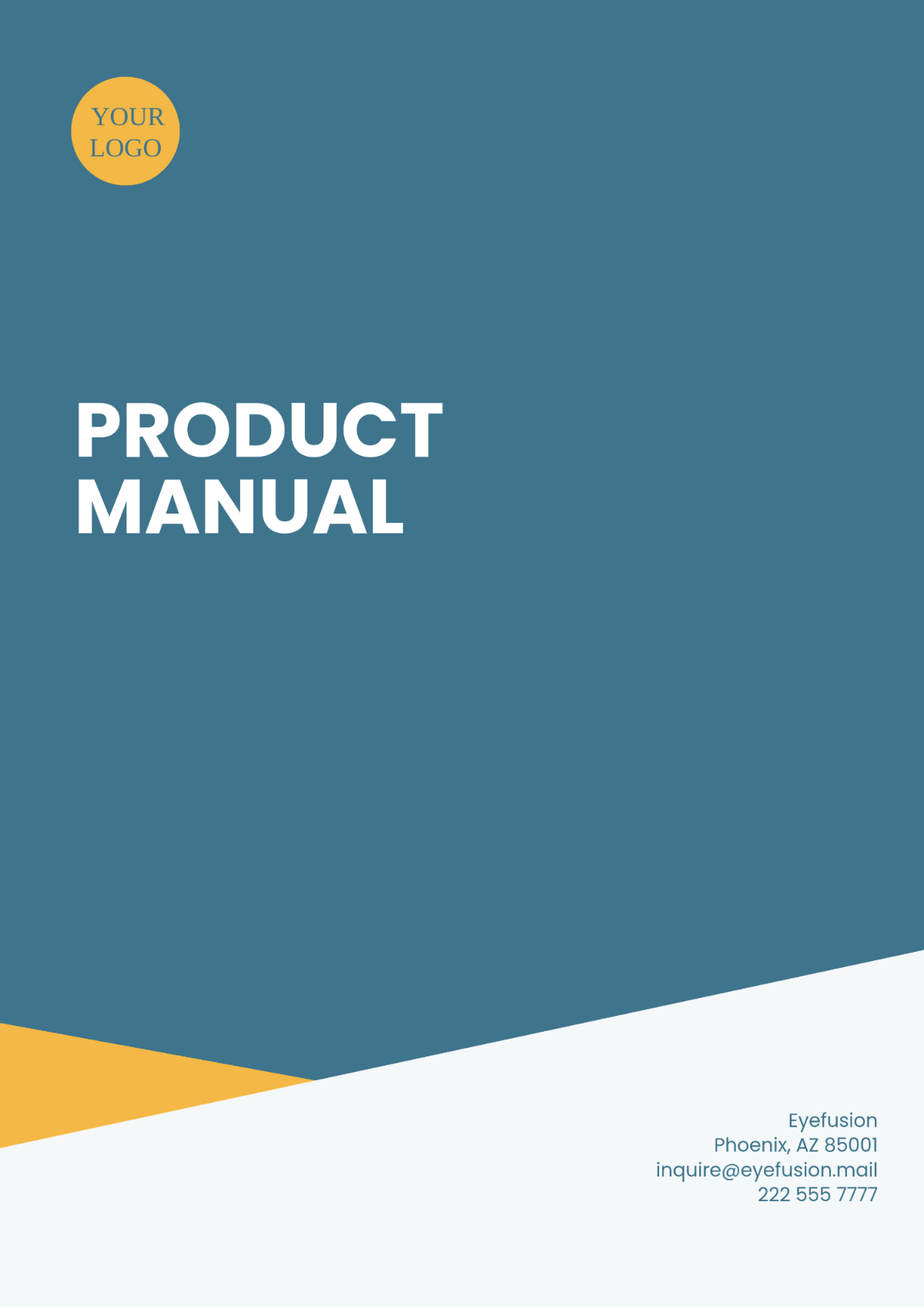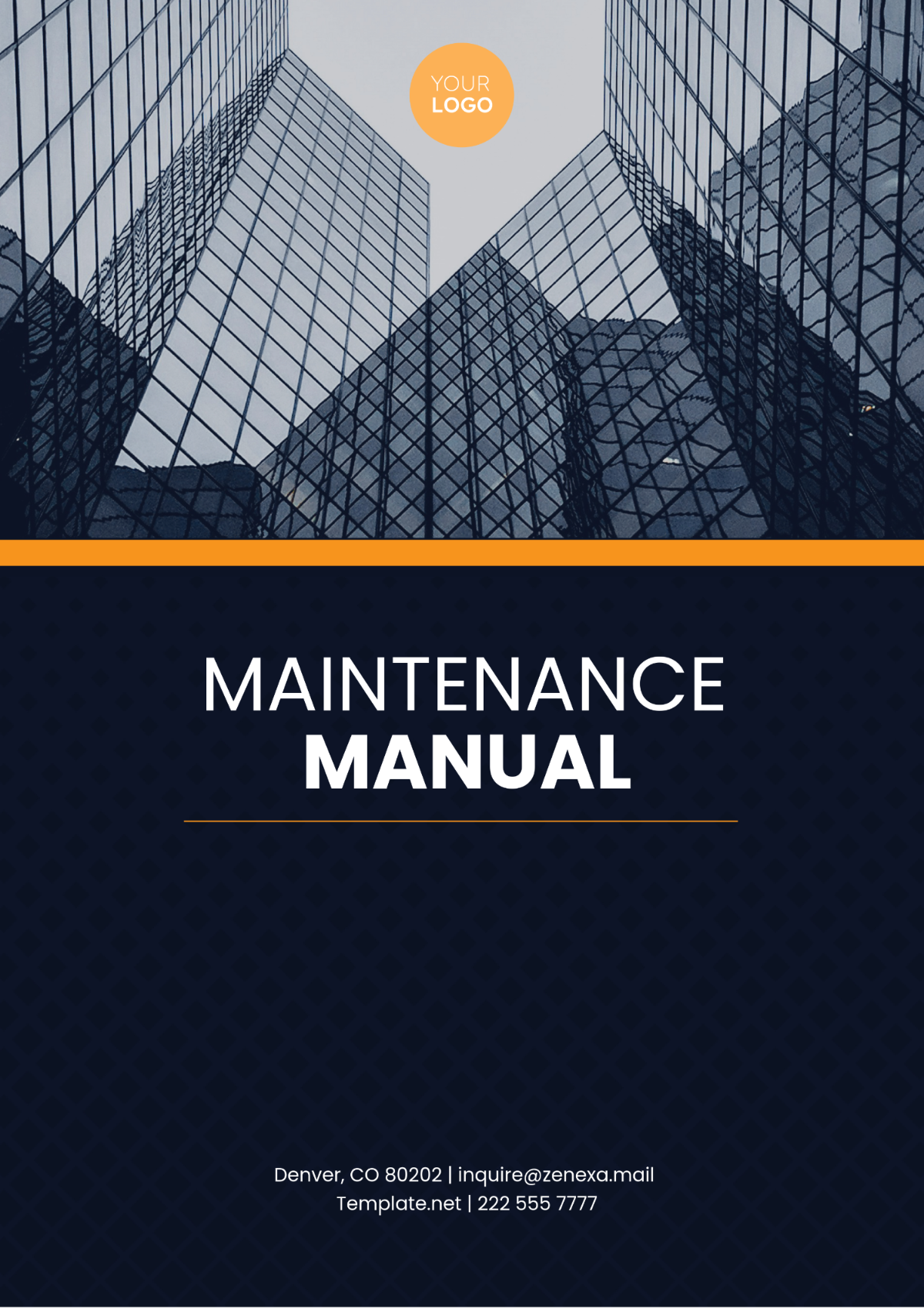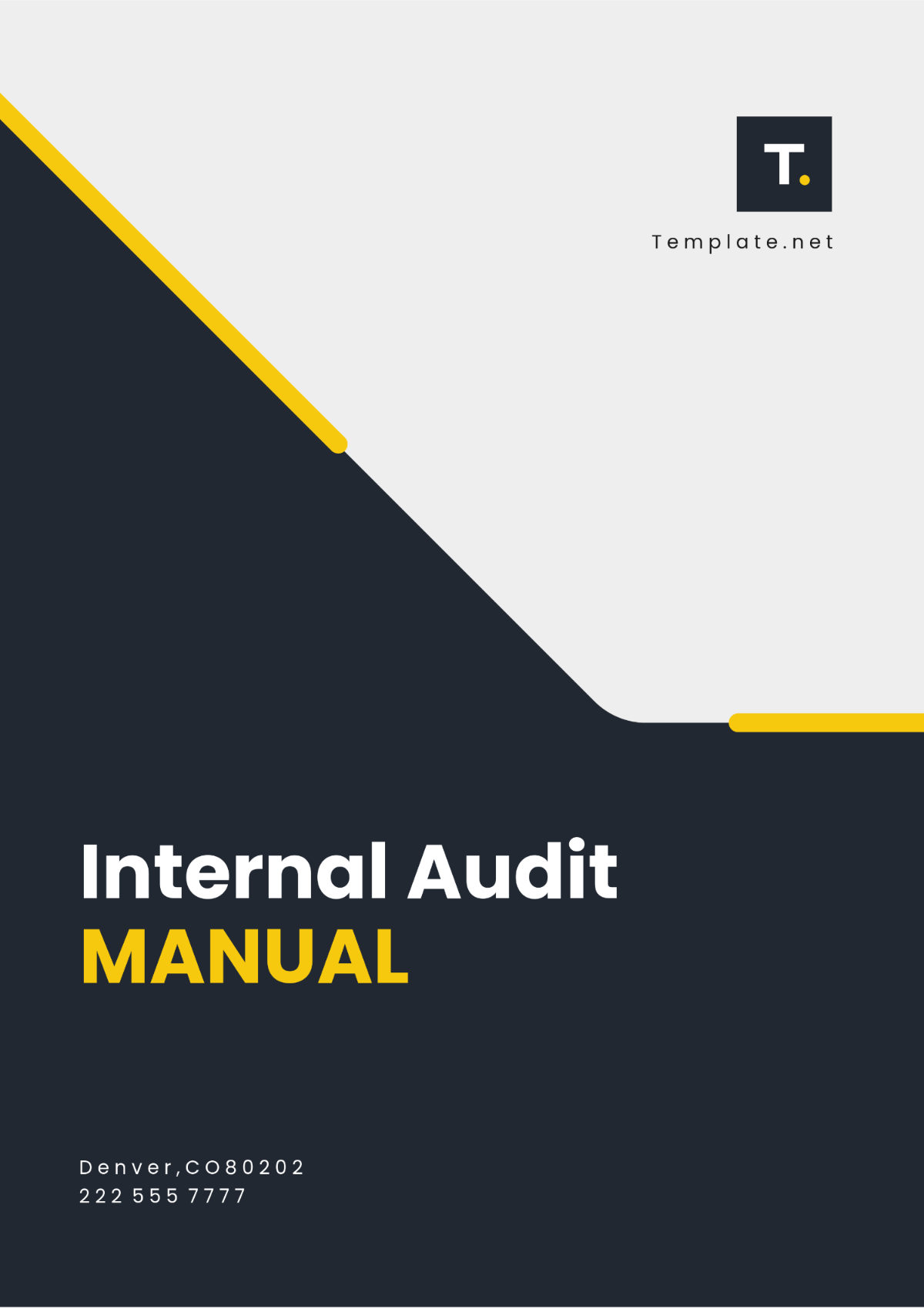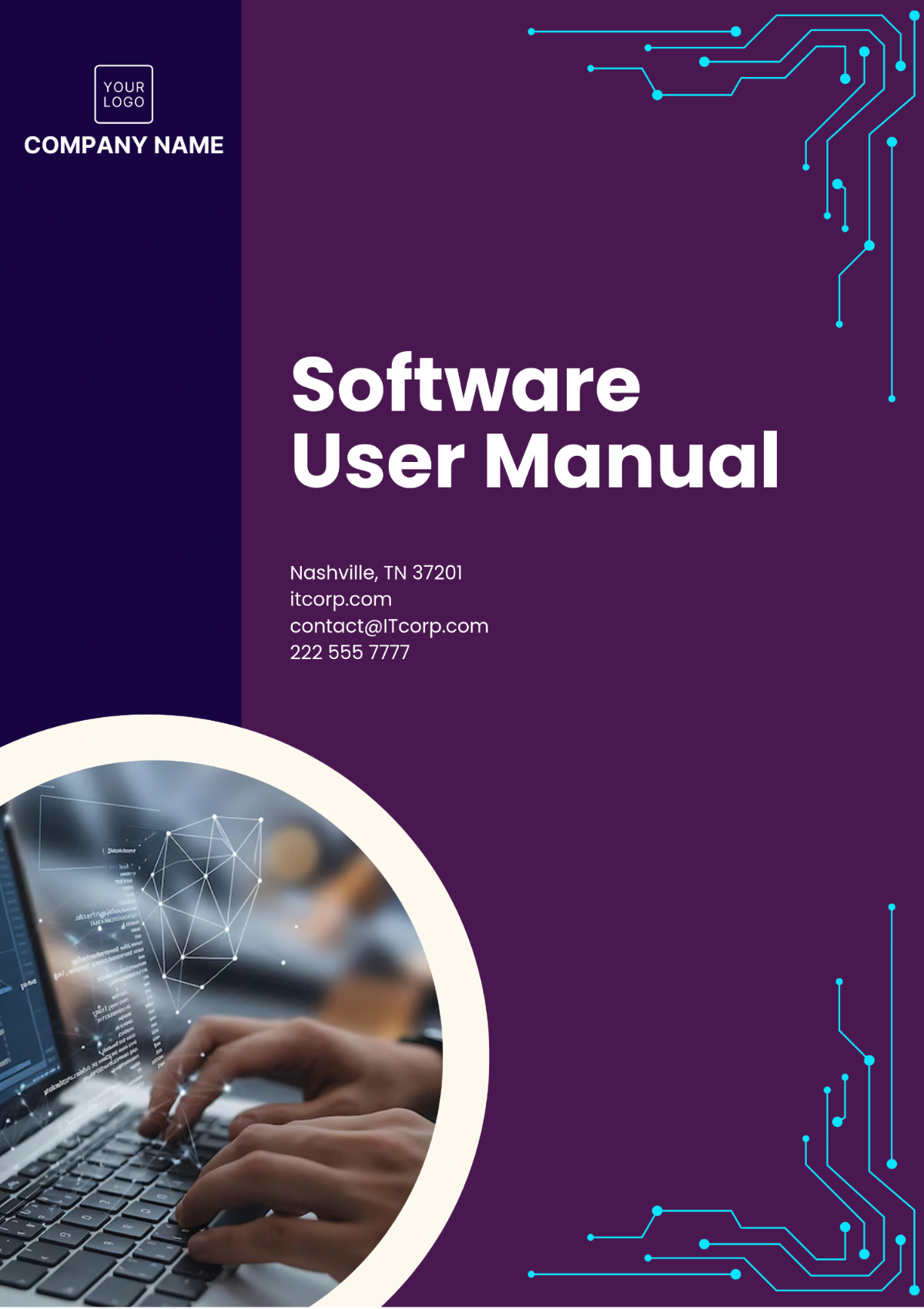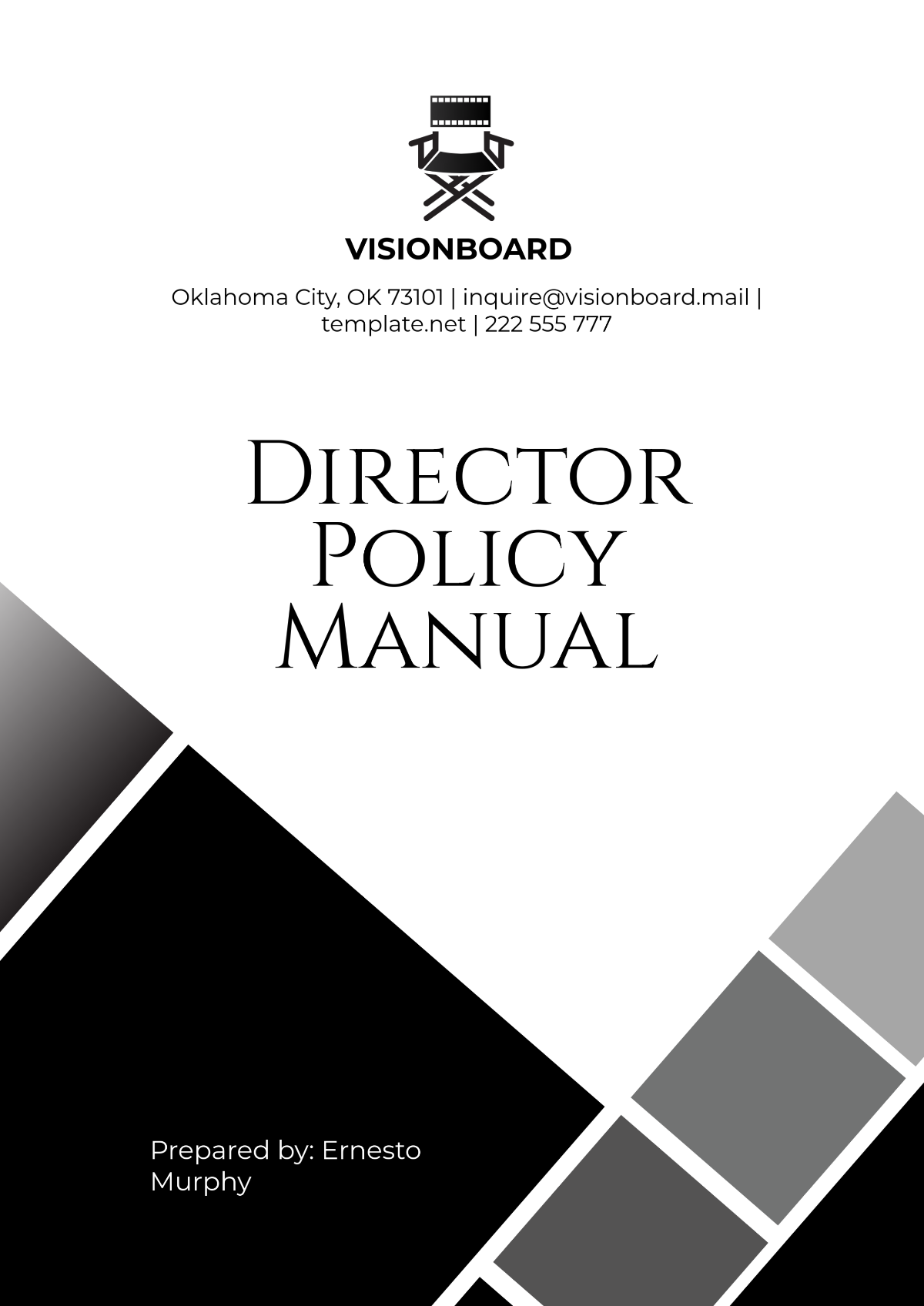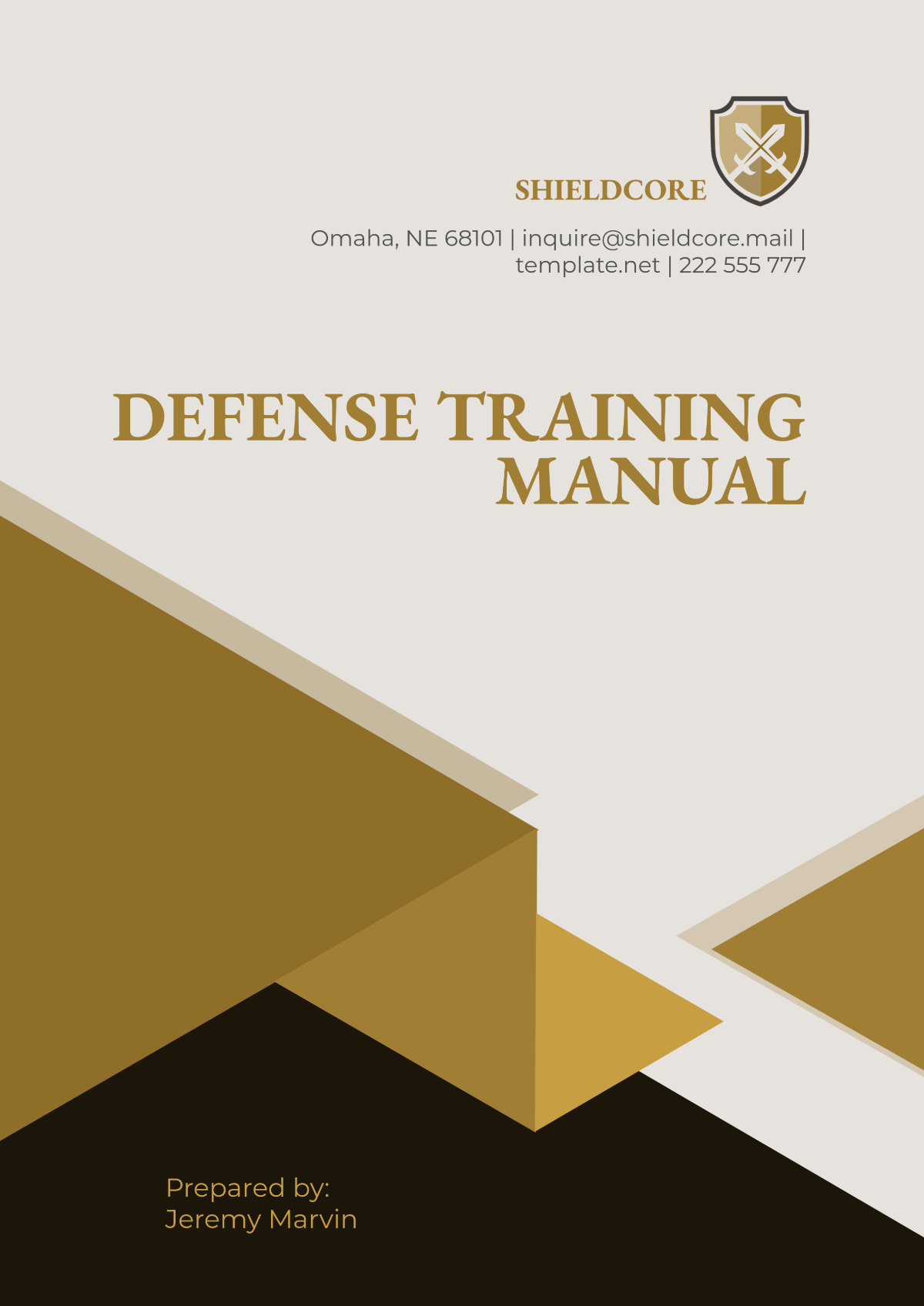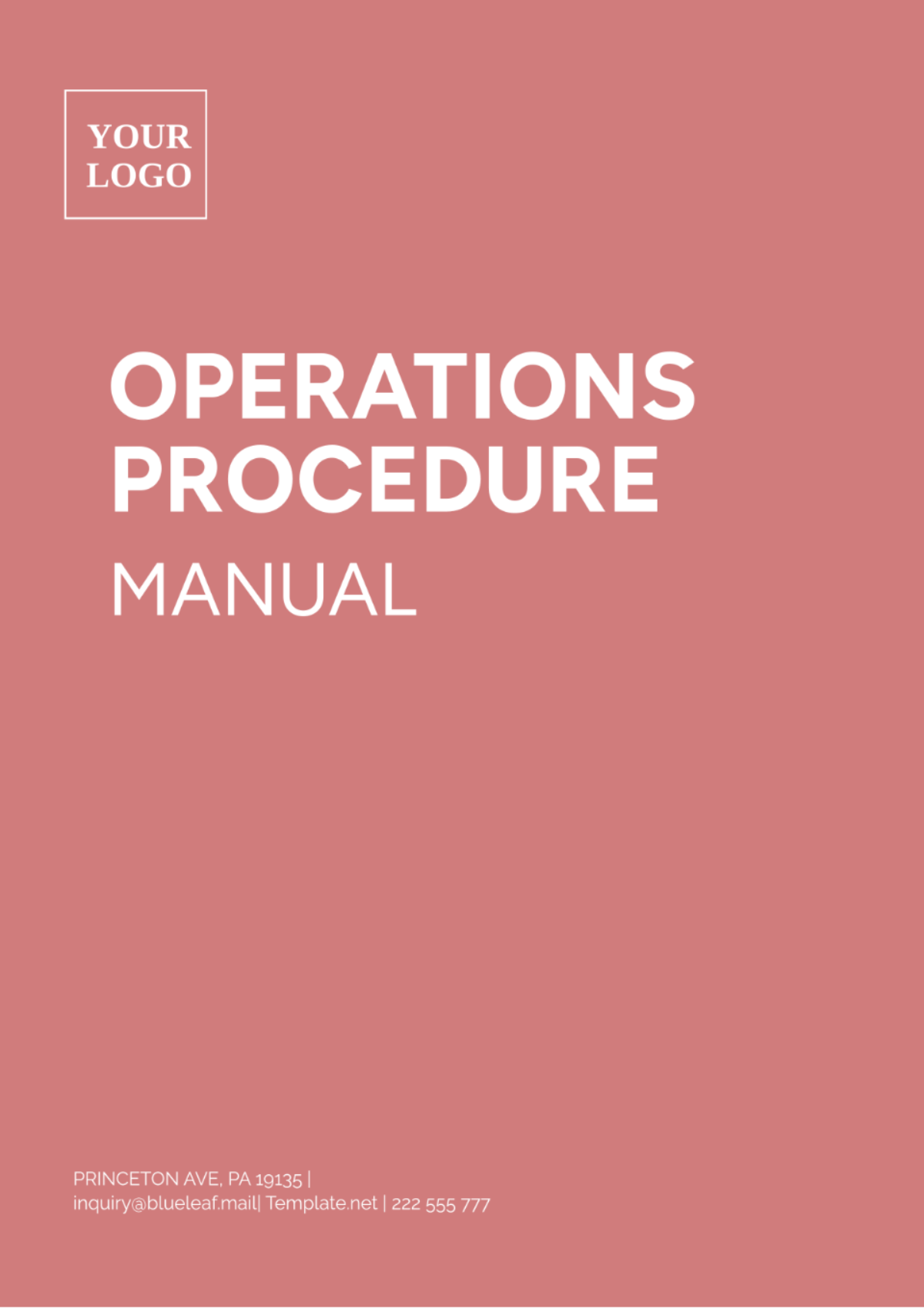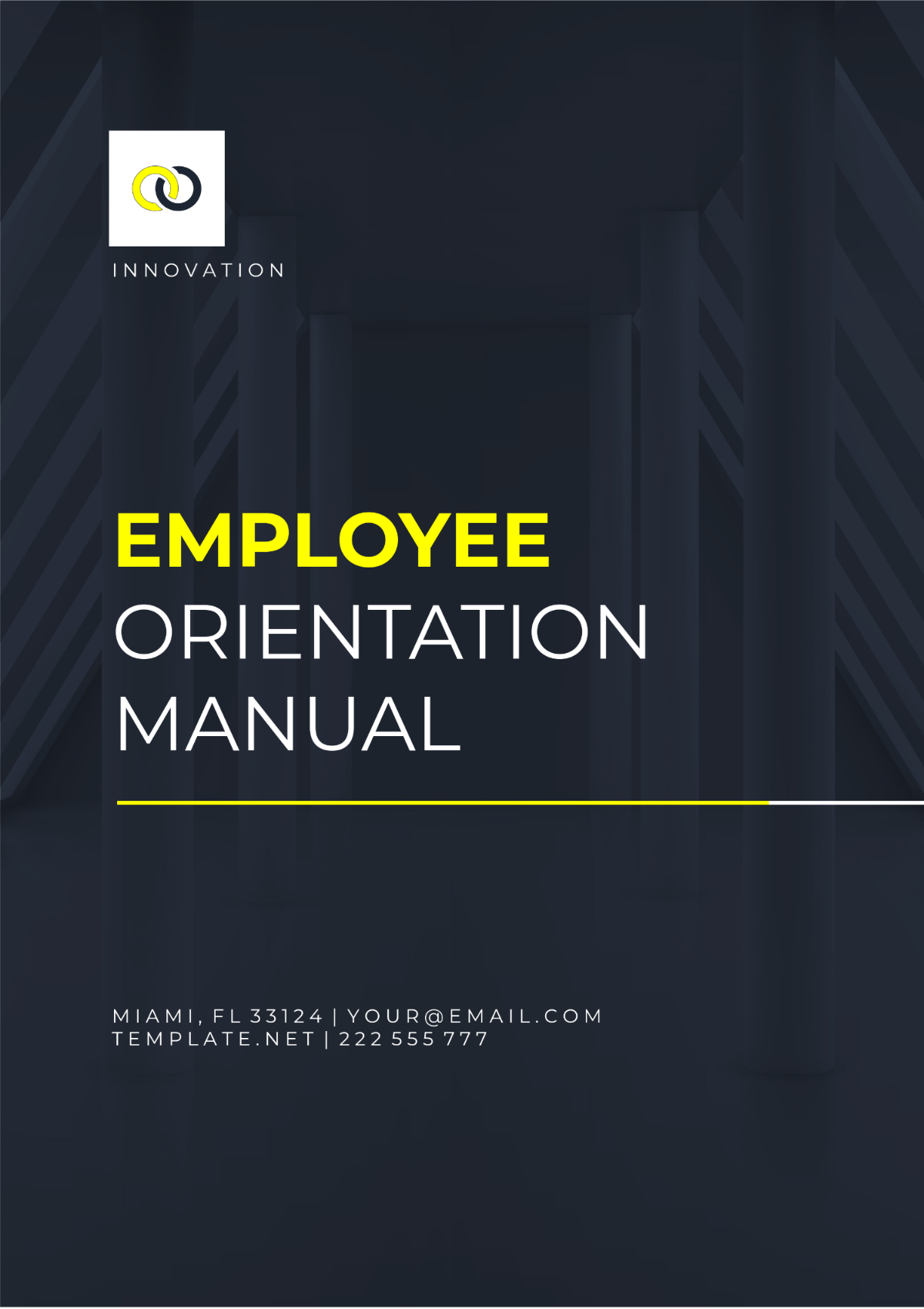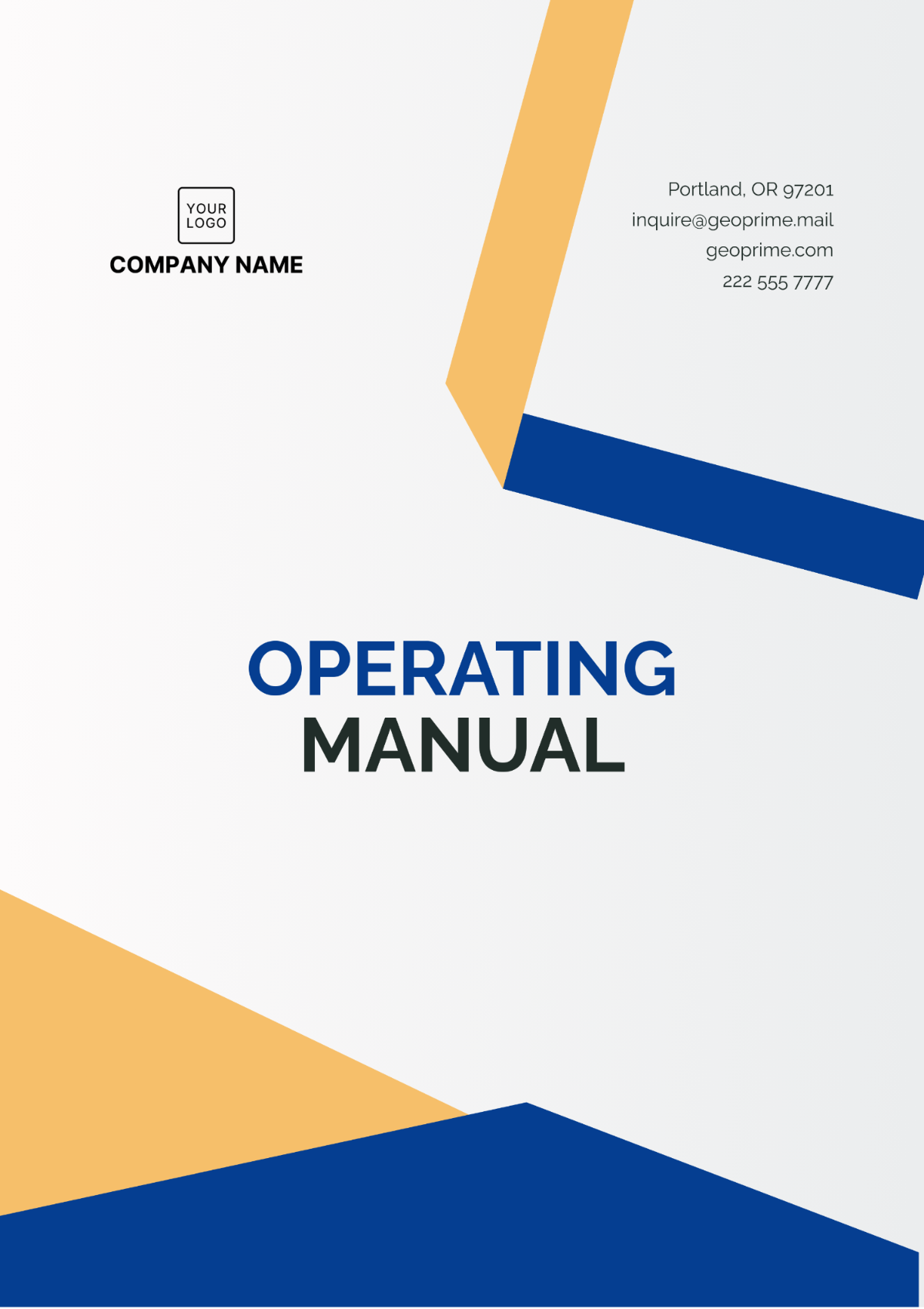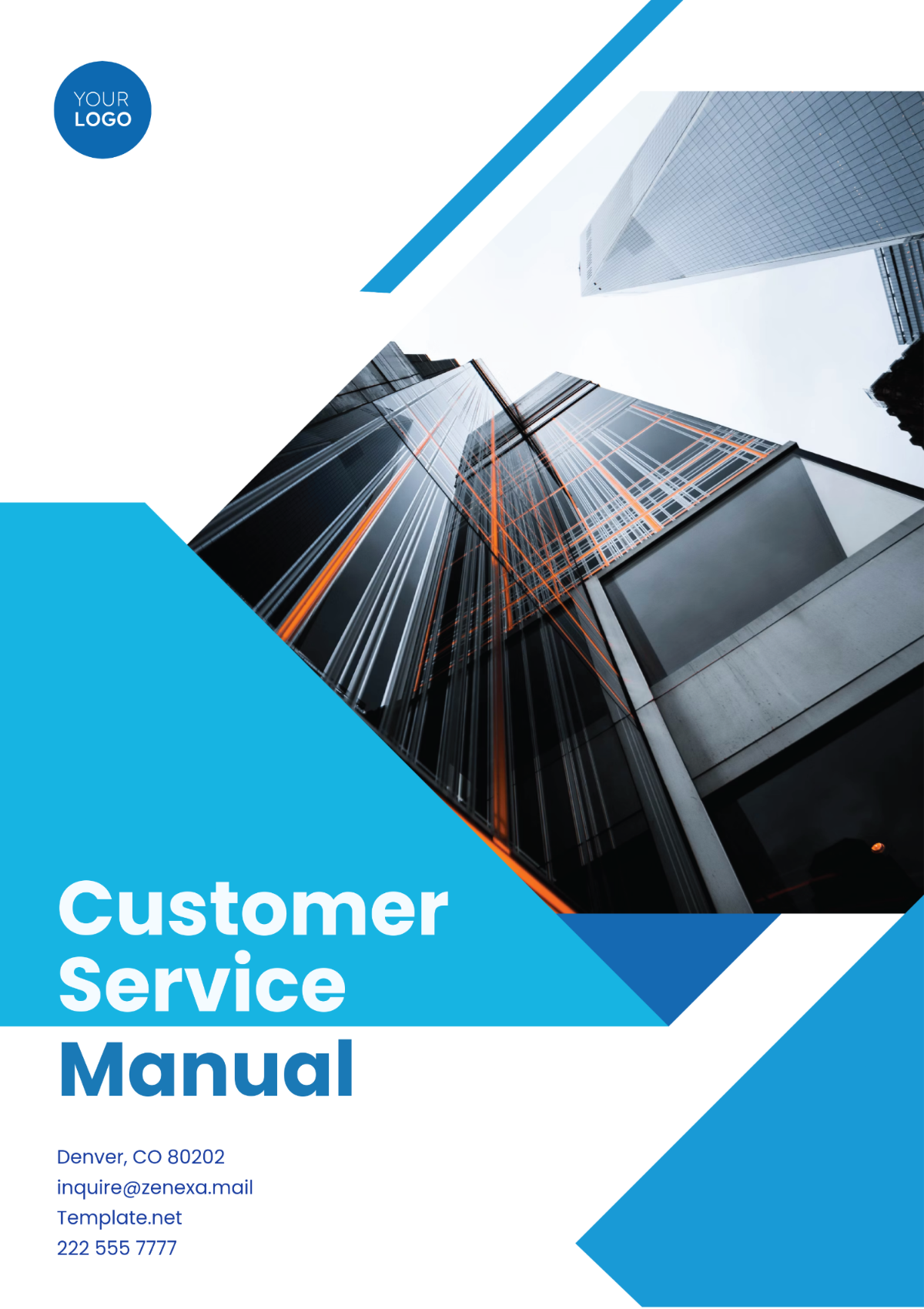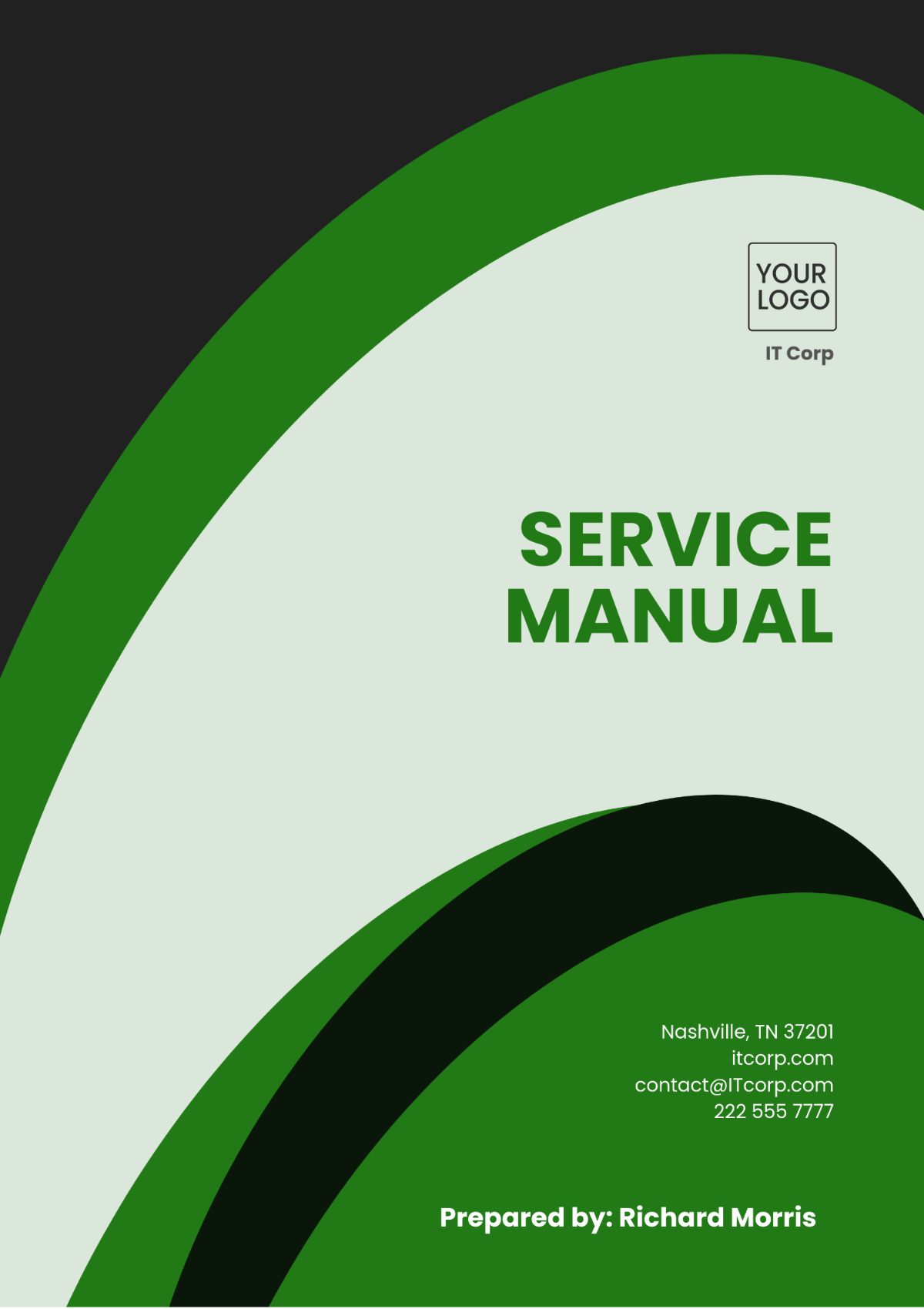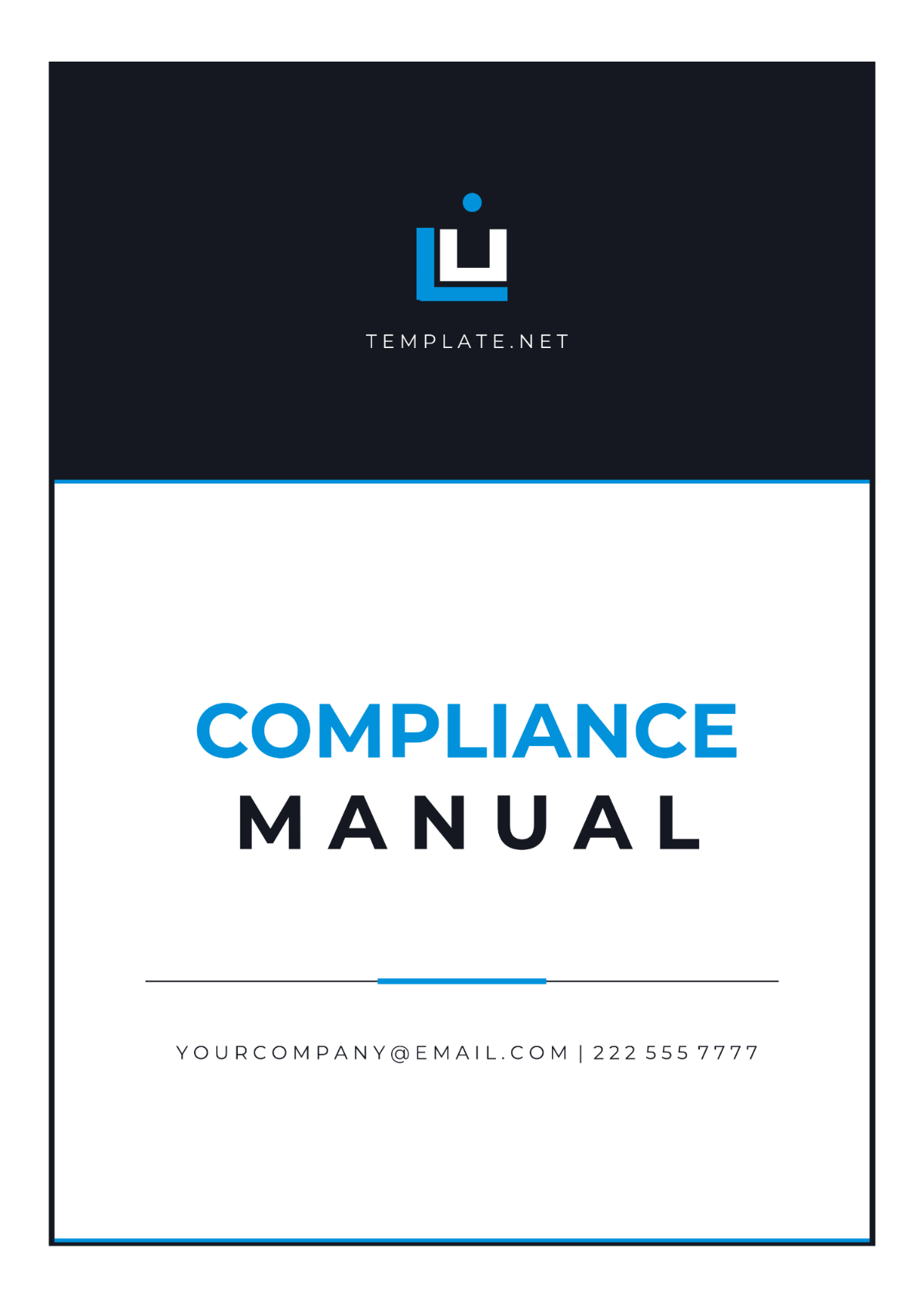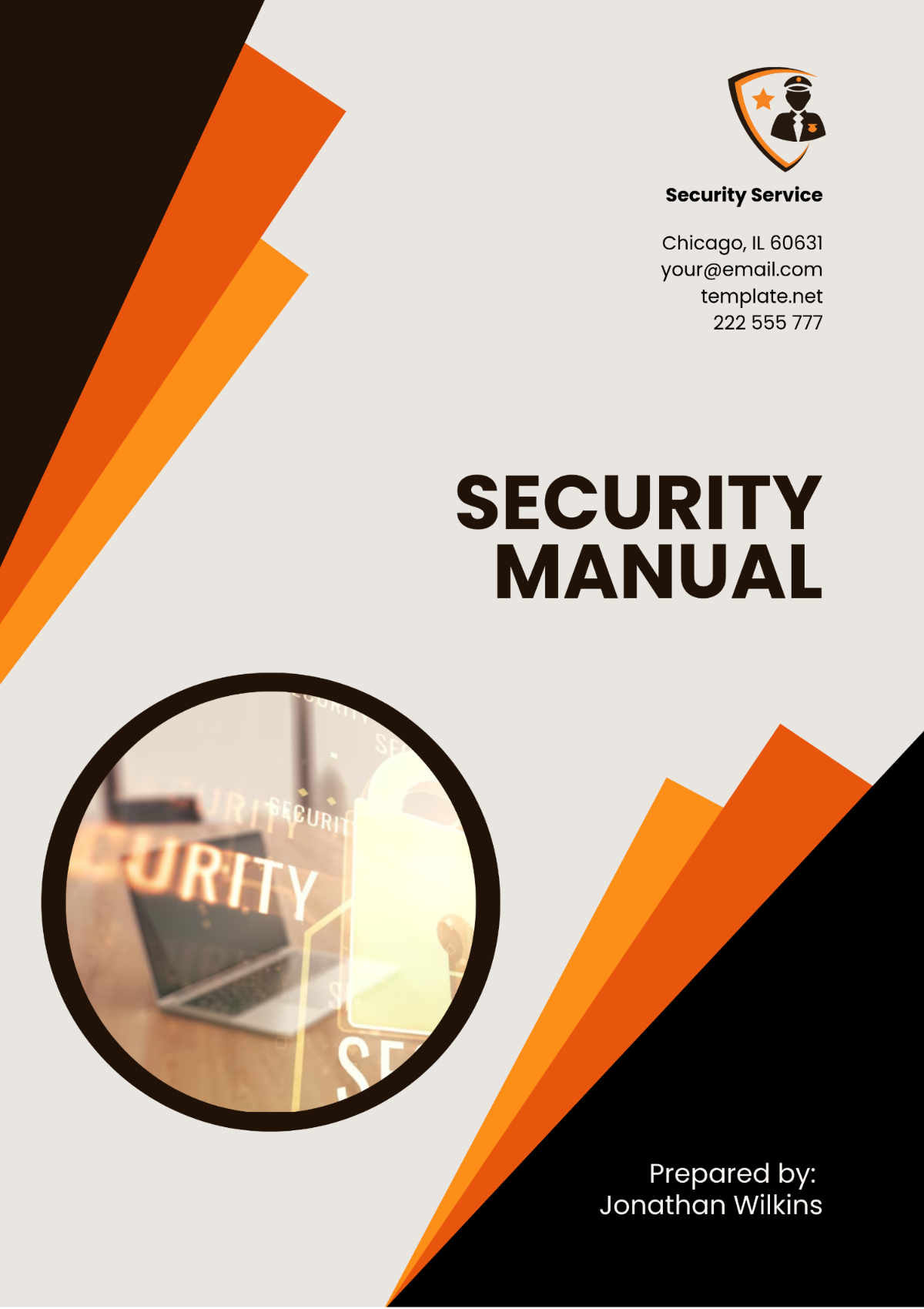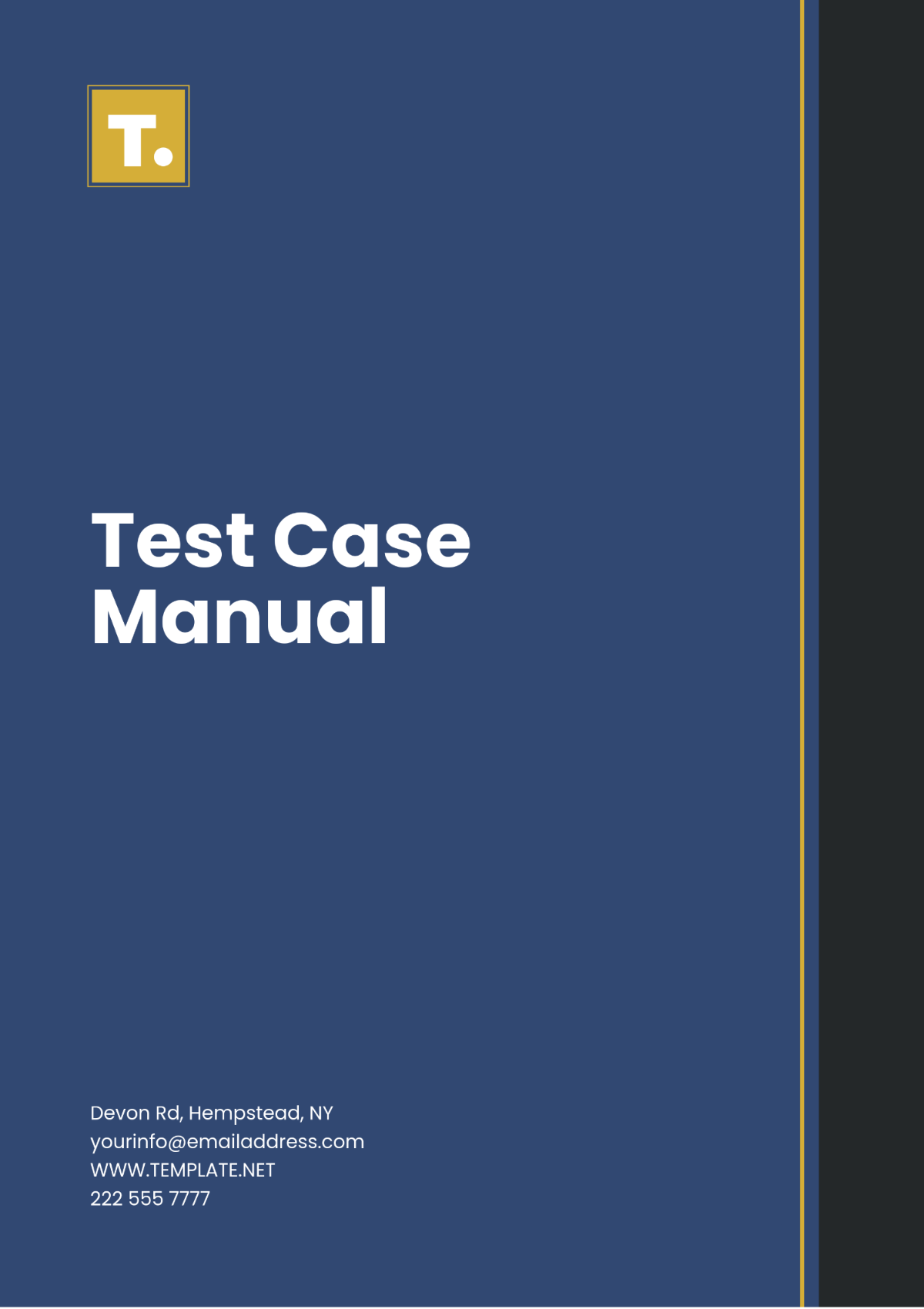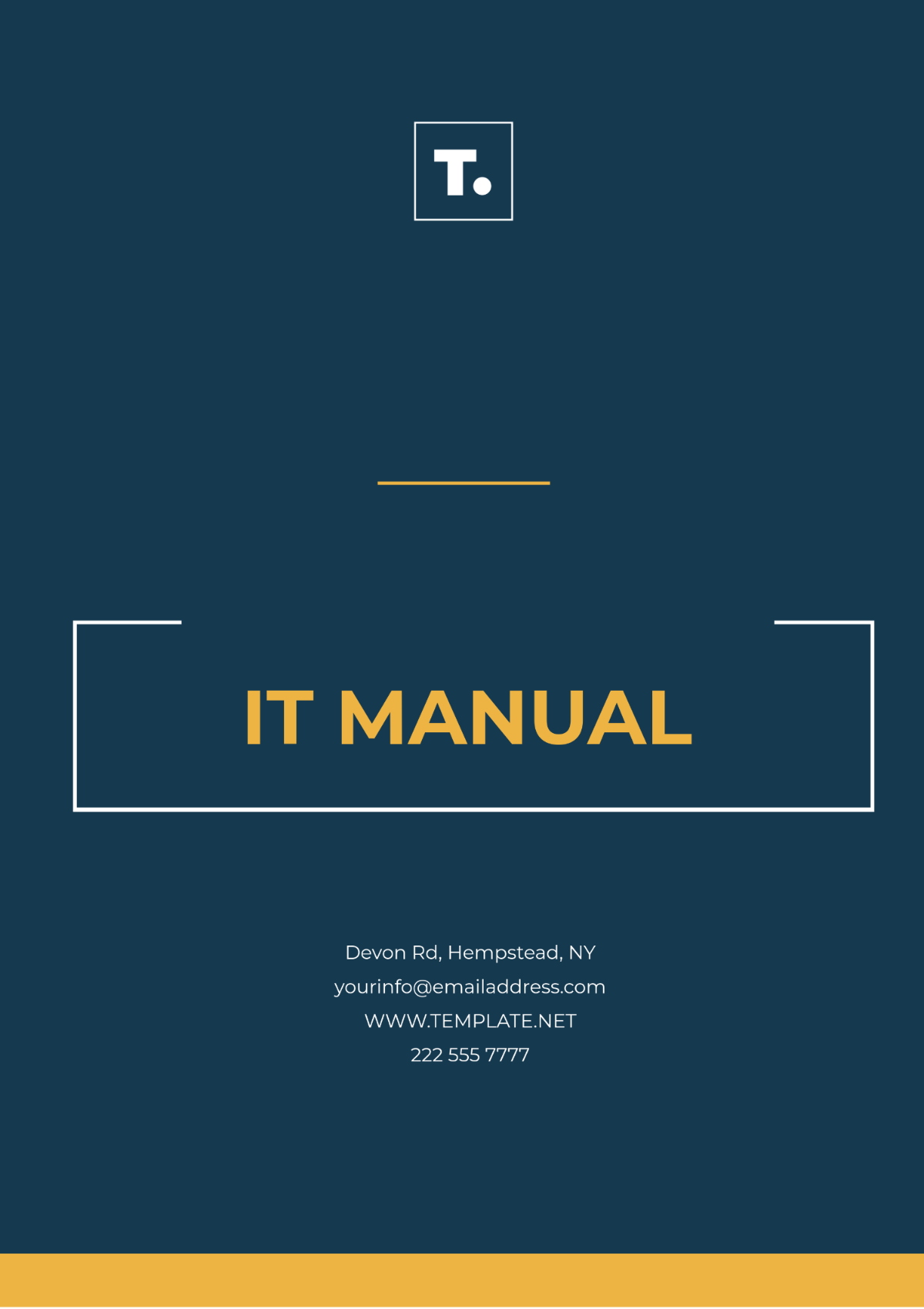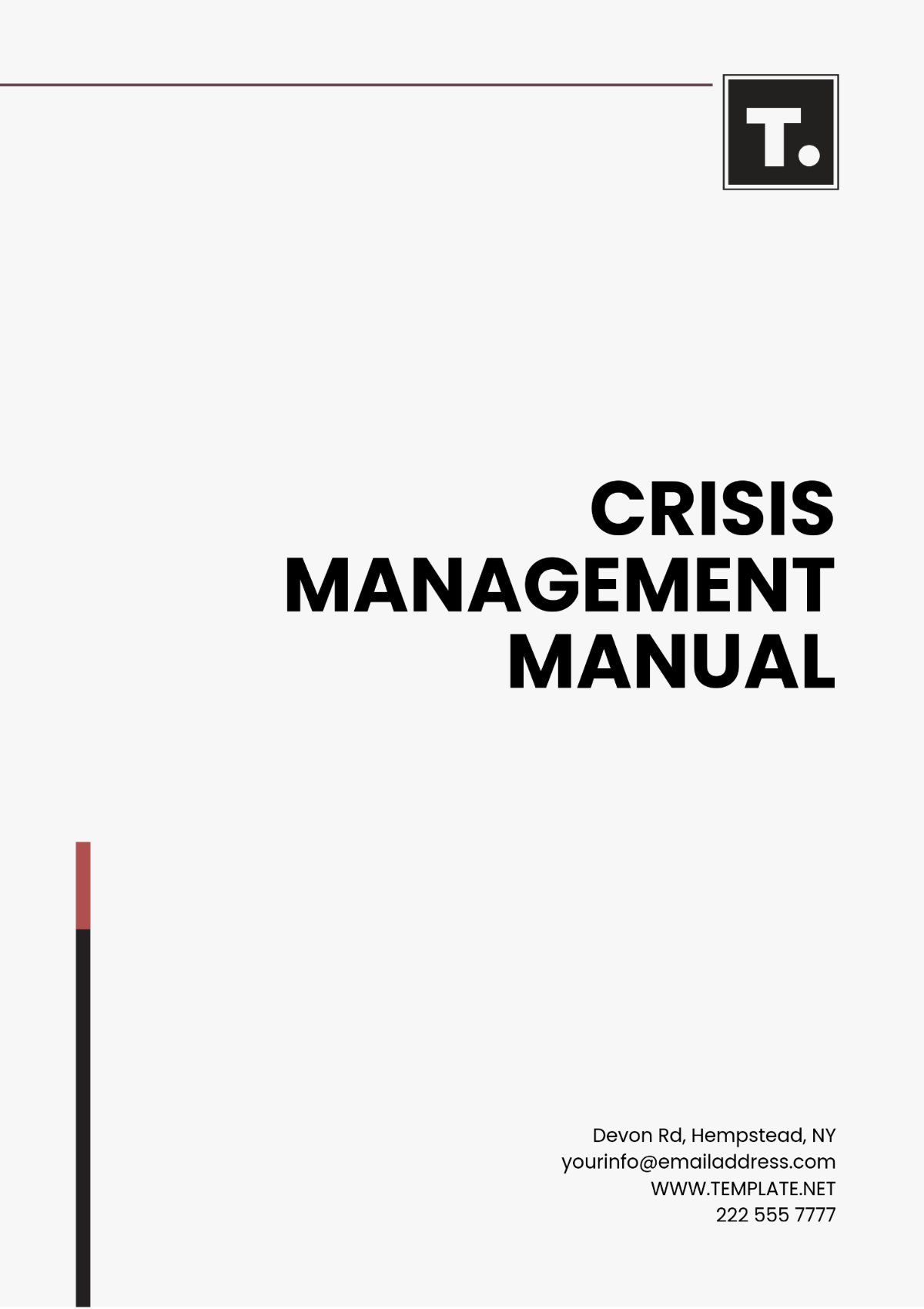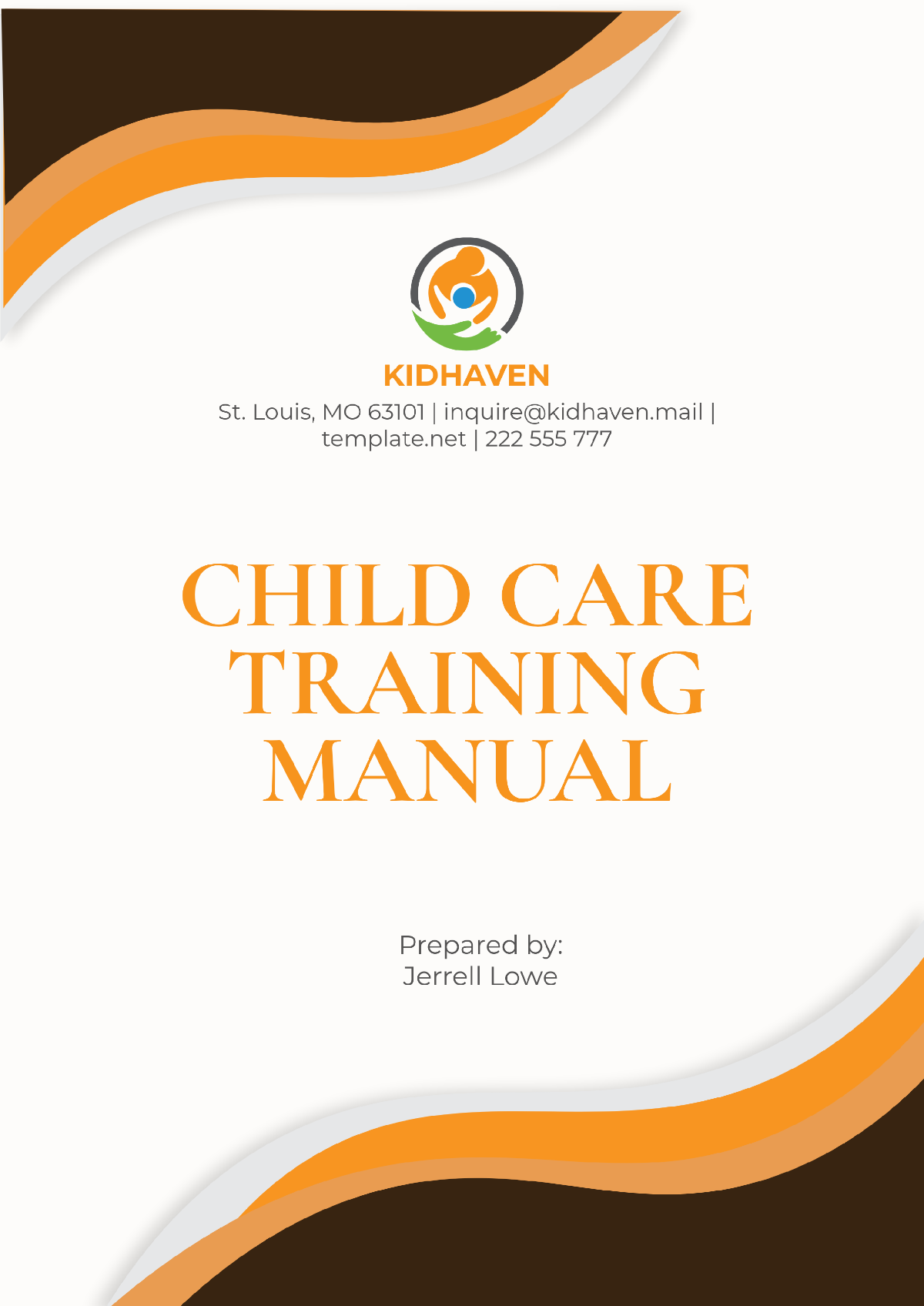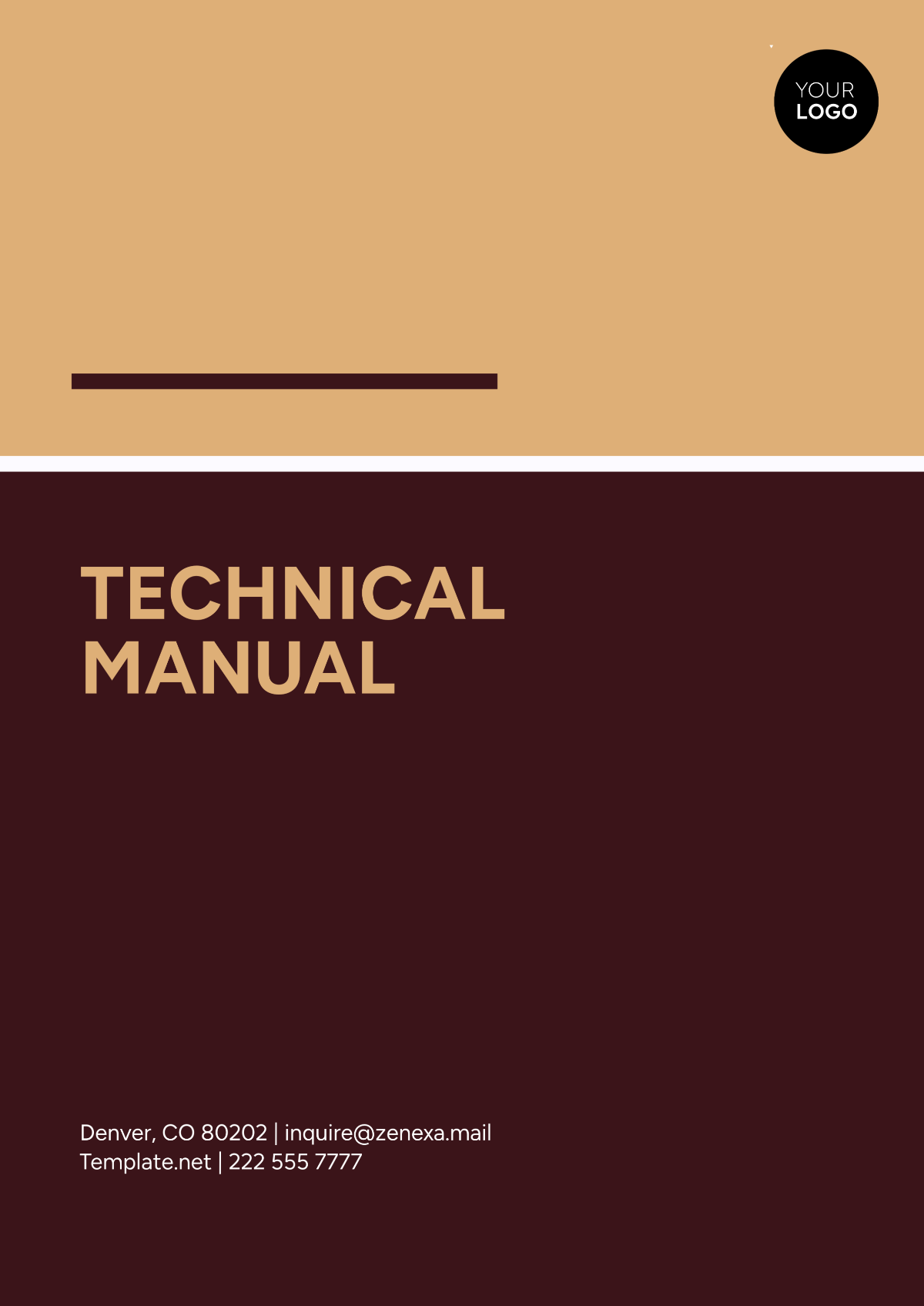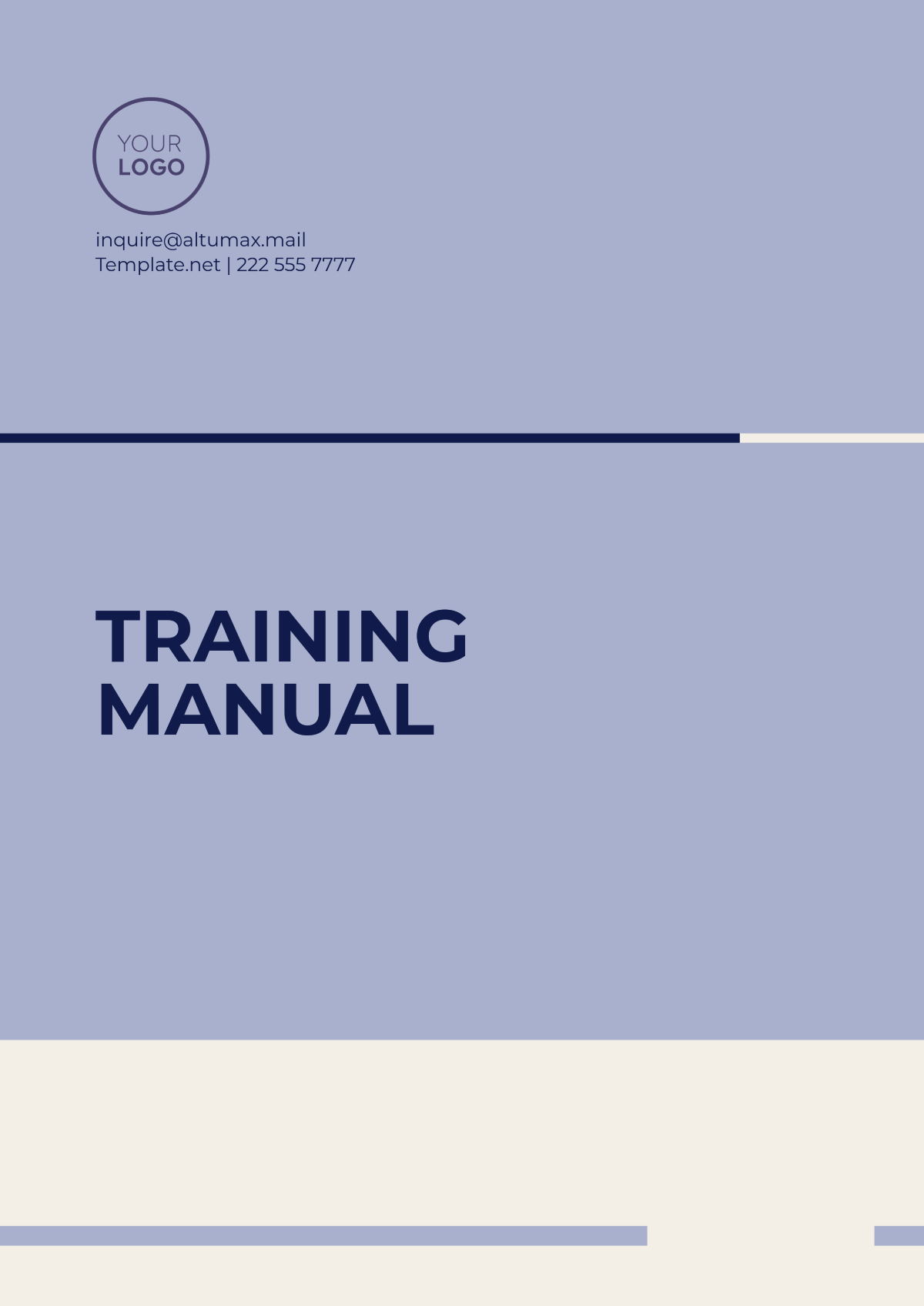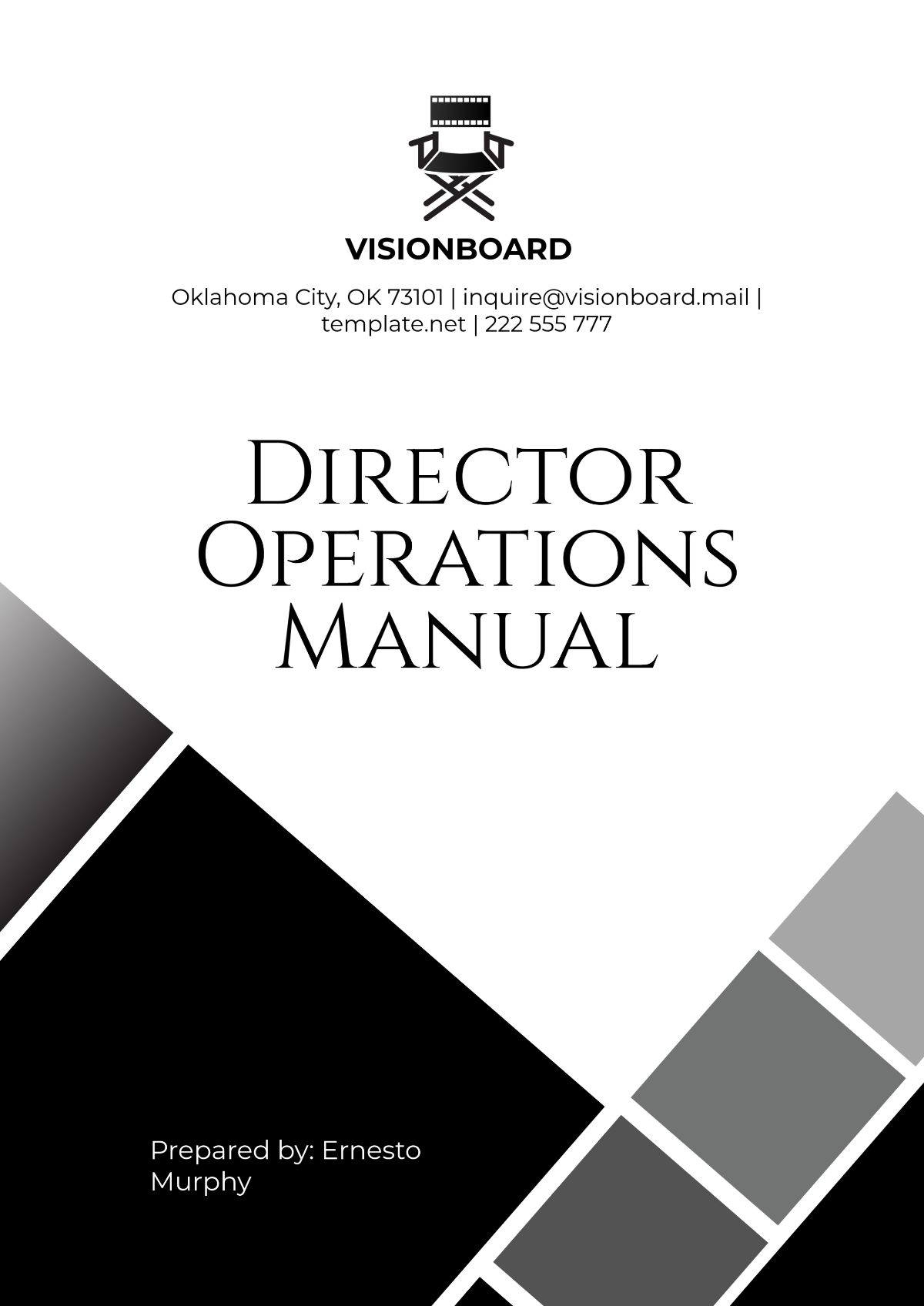Security Service Manual
1. Introduction
1.1 Purpose
The purpose of this Security Service Manual is to establish a comprehensive framework for the security operations of [Your Company Name]. This manual is designed to provide clear guidelines for the protection of our assets, personnel, and sensitive information against various potential threats. It aims to ensure that all employees understand their roles and responsibilities in maintaining security within the organization. By adhering to these established protocols, [Your Company Name] seeks to foster a secure working environment that supports business continuity and compliance with legal regulations. Furthermore, this manual serves as a reference point for all security-related activities and processes, promoting consistency in how security is approached across all departments.
1.2 Scope
This manual applies to all employees, contractors, and visitors of [Your Company Name]. It encompasses a wide range of security aspects, including physical security measures, cybersecurity protocols, personnel security guidelines, and incident response strategies. The scope also extends to all company locations, whether they are corporate offices, operational sites, or temporary installations. Furthermore, the manual outlines the roles of third-party vendors and security service providers, ensuring that they comply with [Your Company Name]'s security standards. It is crucial for all stakeholders to familiarize themselves with the contents of this manual to ensure that security practices are consistently applied across the organization.
1.3 Definitions
For the purposes of this manual, the following terms are defined:
Asset: Any resource owned by [Your Company Name] that holds intrinsic or strategic value, including physical assets (like equipment and facilities), intellectual property, and sensitive information.
Threat: Any circumstance or event with the potential to cause harm to an asset, including natural disasters, cyber-attacks, and insider threats.
Vulnerability: A weakness in a system or process that could be exploited by a threat, making it essential to identify and mitigate these vulnerabilities.
Incident: Any event that has the potential to compromise the security of [Your Company Name] or its assets, requiring immediate attention and response.
Compliance: Adhering to laws, regulations, and internal policies that govern security practices within the organization.
2. Security Policy
2.1 Objectives
The objectives of the security policy are as follows:
Protect Confidentiality: To protect the confidentiality of [Your Company Name]'s information by ensuring that only authorized personnel can access sensitive data.
Ensure Integrity: To maintain the integrity of data and information systems, preventing unauthorized modifications or deletions that could disrupt business operations.
Guarantee Availability: To ensure the availability of essential services and data to authorized users, preventing downtime that could adversely affect business processes.
Minimize Risks: To proactively identify and mitigate risks associated with potential security breaches and incidents, reducing the likelihood of such occurrences.
Regulatory Compliance: To comply with all relevant legal and regulatory requirements regarding data protection, privacy, and security standards, thereby avoiding potential legal consequences.
2.2 Compliance
Compliance with this manual is mandatory for all employees and contractors. Each individual is expected to familiarize themselves with the policies outlined in this document. Violations of the security policy may lead to disciplinary actions, which could include warnings, suspension, or termination of employment or contracts. [Your Company Name] will conduct regular reviews of security policies to ensure that they remain effective and relevant. These reviews will take into account changes in technology, business operations, and the regulatory landscape. Failure to comply with security policies not only jeopardizes the safety of the organization but also increases the risk of legal liabilities and reputational damage.
2.3 Responsibilities
All employees have a responsibility to maintain security standards within [Your Company Name]. Specific roles include:
Role | Responsibilities |
|---|---|
Security Manager | Oversee all security operations, including policy development, implementation, and training. They are responsible for ensuring compliance with security standards and conducting regular risk assessments. |
Department Managers | Ensure that security measures are implemented and followed within their respective departments. They must communicate security policies to their teams and report any security concerns to the Security Manager. |
IT Department | Manage cybersecurity measures, including network security, data protection, and incident response for IT-related threats. They are also responsible for maintaining software and hardware used in security operations. |
All Employees | Report security incidents and adhere to security protocols. Each employee must remain vigilant and proactive in identifying potential security risks and should participate in ongoing security training programs. |
3. Security Procedures
3.1 Risk Assessment
Risk assessment is a critical component of the security management process. It involves identifying potential threats and vulnerabilities to determine the appropriate security measures.
3.1.1 Risk Identification
Risk identification involves systematically identifying potential risks that may affect [Your Company Name]. This includes:
Analyzing Past Incidents: Reviewing historical incident reports to identify recurring issues and vulnerabilities. This analysis helps in understanding the types of threats that have previously impacted the organization.
Surveys and Interviews: Conducting surveys and interviews with staff to gather insights on perceived risks and to identify areas of concern. Employee feedback is invaluable in highlighting potential weaknesses in security practices.
Industry Reports: Reviewing industry reports and best practices for identifying emerging threats. Keeping abreast of trends in security can help [Your Company Name] stay ahead of potential risks.
Vulnerability Scanning: Regularly conducting vulnerability scans on systems and networks to identify weaknesses that could be exploited by cyber threats.
3.1.2 Risk Evaluation
Once risks are identified, they must be evaluated based on their potential impact and likelihood. This evaluation is categorized as follows:
Risk Level | Impact | Likelihood | Action Required |
|---|---|---|---|
High | Catastrophic | Likely | Immediate action required. This includes activating the incident response plan and notifying stakeholders. |
Medium | Significant | Possible | Develop mitigation strategies. This may involve increasing security measures or conducting additional training. |
Low | Minor | Unlikely | Monitor periodically. Maintain awareness of potential risks but prioritize other, higher-level threats. |
3.2 Access Control
Access control is vital for ensuring that only authorized personnel can access sensitive areas and information.
3.2.1 User Authentication
User authentication procedures include:
Password Policies: All employees must use complex passwords with a minimum of [8] characters, including uppercase letters, lowercase letters, numbers, and special characters. This helps prevent unauthorized access and strengthens overall security.
Two-Factor Authentication (2FA): Two-factor authentication is required for accessing sensitive systems and data, adding an additional layer of security. Employees must verify their identity using a secondary method, such as a smartphone app or SMS verification.
Regular Audits of Access: User access will be reviewed on a [6]-month basis to ensure compliance with access policies and to identify any unauthorized access. Any changes in employment status should immediately be reflected in access permissions.
3.2.2 Physical Access Control
Physical security measures include:
Identification Badges: All employees and visitors must wear identification badges at all times to clearly identify authorized personnel. Badges should be visible and easily accessible to security personnel.
Security Personnel: Trained security personnel will monitor access points during business hours to deter unauthorized access. They will also conduct regular patrols of the premises to ensure that all security measures are being followed.
Visitor Logs: A visitor log will be maintained, recording the names, purpose of visit, and duration of stay. This log must be reviewed regularly to ensure all visitors are accounted for and that no unauthorized individuals are present on site.
Access Control Systems: Electronic access control systems will be implemented at key entry points, using keycards or biometric data to restrict access to sensitive areas.
3.3 Incident Response
A well-defined incident response plan ensures that [Your Company Name] can effectively manage security incidents.
3.3.1 Incident Reporting
All incidents must be reported immediately to the designated security manager. The report should include:
Date and Time of the Incident: Documenting when the incident occurred is crucial for understanding the timeline and response.
Location of the Incident: Identifying where the incident took place helps in assessing the potential impact on operations and safety.
Description of the Incident: Providing a detailed description allows for better analysis and helps in developing preventive measures for the future.
Names of Individuals Involved or Affected: Identifying individuals who may be affected by the incident ensures that they receive appropriate support and follow-up actions.
3.3.2 Incident Handling
Once reported, the following steps will be taken:
Assessment: Evaluate the severity of the incident, determining the potential impact on operations and safety. Immediate steps must be taken to contain the situation if it poses a serious risk.
Containment: Implement measures to contain the incident and prevent further harm. This may include isolating affected systems, evacuating personnel, or initiating lockdown procedures.
Investigation: Conduct a thorough investigation to determine the cause of the incident, gather evidence, and identify contributing factors. The investigation team should include representatives from security, IT, and relevant departments.
Recovery: Restore affected systems and operations to normal as quickly as possible. This may involve restoring data from backups, repairing damaged systems, and ensuring that all operations are functioning as expected.
Review: After the incident is resolved, conduct a debriefing with all involved parties to identify lessons learned and improve future responses. Document the findings and update the incident response plan as necessary.
4. Security Training
4.1 Training Objectives
The objectives of security training are to:
Educate Employees: Ensure all employees understand security policies and procedures, emphasizing the importance of their roles in maintaining a secure workplace. Training should include real-world examples to illustrate potential risks.
Equip with Skills: Equip employees with skills to identify and report security threats effectively. Employees should be trained on recognizing suspicious behavior, phishing attempts, and other security-related concerns.
Foster a Security Culture: Foster a culture of security awareness across [Your Company Name] by encouraging open discussions about security concerns and promoting proactive behavior. Regular communication and updates will help reinforce the importance of security practices.
4.2 Training Schedule
Training sessions will be conducted semi-annually and will cover the following topics:
Training Topic | Frequency | Description |
|---|---|---|
Security Policies Overview | Every [6] months | A comprehensive review of security policies, procedures, and expectations for compliance. |
Incident Reporting Procedures | Every [6] months | Training on how to recognize, report, and manage security incidents effectively. |
Cybersecurity Awareness | Every [6] months | Focused training on identifying cybersecurity threats, including phishing, malware, and social engineering tactics. |
Emergency Response Training | Annually | Comprehensive training on emergency protocols, including evacuation procedures and first aid training. |
4.3 Training Evaluation
To measure the effectiveness of training programs, evaluations will be conducted through:
Feedback Surveys: Participants will complete surveys to provide feedback on training quality, relevance, and engagement. This feedback will be used to improve future training sessions.
Knowledge Assessments: Tests will be administered to assess participants' understanding of security procedures, ensuring that they can apply what they have learned effectively.
Performance Reviews: Employee performance will be reviewed to determine the practical application of training. Managers should provide feedback on employees' adherence to security protocols and offer additional support where necessary.
5. Security Audits
5.1 Audit Objectives
The objectives of security audits are to:
Assess Effectiveness: Assess the effectiveness of security policies and procedures in place at [Your Company Name]. This includes evaluating how well security measures mitigate identified risks.
Identify Areas for Improvement: Identify areas for improvement in security practices, including gaps in training, compliance, and incident management. Regular audits ensure that security practices evolve with changing threats.
Ensure Compliance: Ensure compliance with relevant laws and regulations regarding data protection, privacy, and security standards. Non-compliance can result in severe penalties and damage to the company’s reputation.
5.2 Audit Procedures
Audits will be conducted on an annual basis and will include:
Document Review: Evaluate existing security policies, incident reports, and training records. This review should ensure that all documentation is up to date and reflective of current practices.
Site Inspections: Inspect physical security measures, such as access control systems, surveillance cameras, and overall facility security. Inspections should assess whether physical measures are functioning as intended.
Interviews: Conduct interviews with key personnel to assess compliance with security protocols. Gathering insights from staff at various levels can reveal both strengths and weaknesses in current practices.
Penetration Testing: Where appropriate, simulate attacks on systems to identify vulnerabilities that could be exploited by malicious actors. This helps in understanding the robustness of cybersecurity measures.
5.3 Audit Reporting
Audit findings will be compiled into a report that includes:
Summary of the Audit Process: A brief overview of the audit process, including the methodologies used and the scope of the audit.
Findings and Recommendations: Detailed findings related to the effectiveness of security measures and recommendations for improvements. This section should prioritize actions based on their potential impact on security.
Action Plan for Addressing Issues: An action plan outlining how identified issues will be addressed, including timelines and responsible parties for each corrective measure. This ensures accountability and follow-through on recommendations.
6. Appendices
6.1 Glossary
Confidentiality: Assurance that information is not disclosed to unauthorized individuals, ensuring that sensitive data remains protected.
Integrity: Assurance that information is accurate and has not been altered or tampered with, providing trust in the data's authenticity.
Availability: Assurance that information is accessible to authorized users when needed, ensuring that business operations can continue without disruption.
Incident Response Team (IRT): A designated group of individuals responsible for responding to and managing security incidents within [Your Company Name].
Malware: Malicious software designed to disrupt, damage, or gain unauthorized access to computer systems.
6.2 Contact Information
For any questions or concerns related to security policies or procedures, please contact:
Security Manager: [Your Name]
Email: [Your Email]
Phone: [Your Company Number]
Office Location: [Your Company Address]
